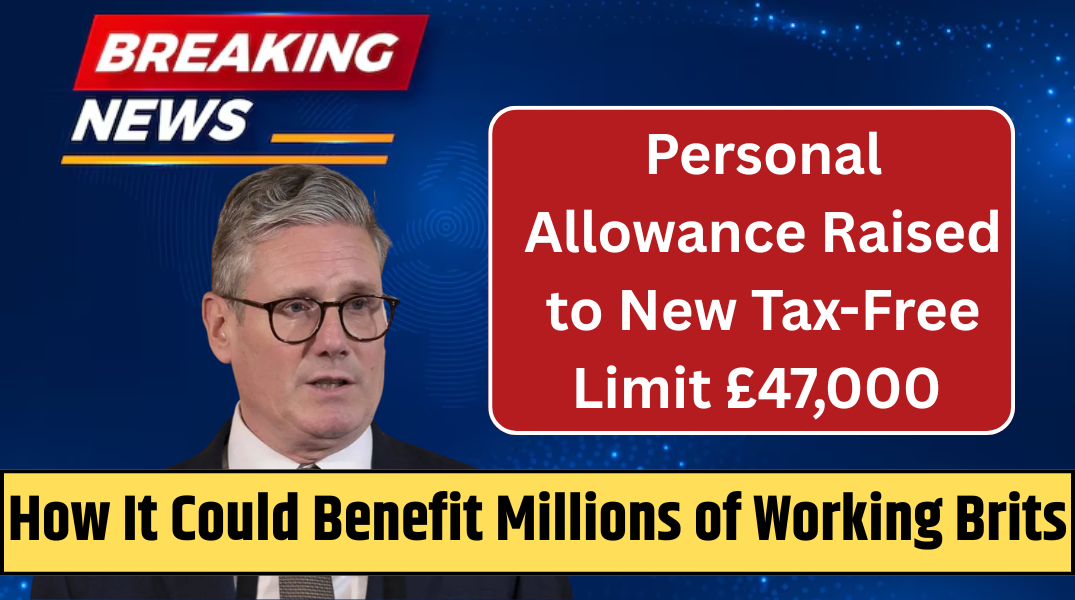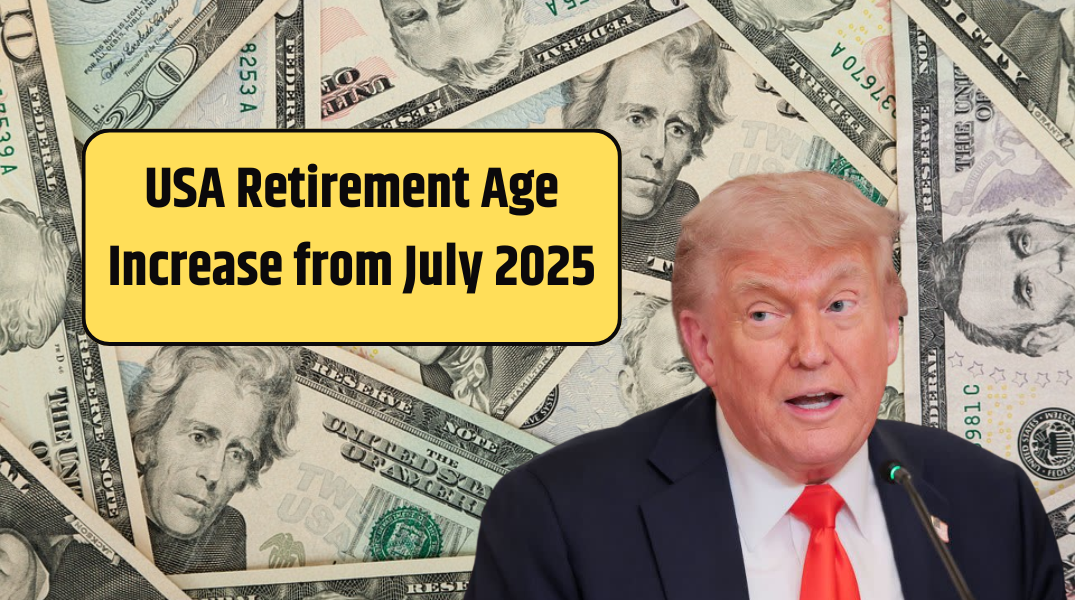In 2025, a major conversation is unfolding across the UK over the future of the Personal Allowance — the amount of income you can earn before paying income tax. For decades, this allowance has risen gradually, often in line with inflation. But with living costs soaring and wages stagnating for much of the population, campaigners and economists are pushing for an eye-watering increase: raising the tax-free allowance from £12,570 to £47,000.
If implemented, this reform would mark one of the most significant overhauls of the UK tax system in a generation, fundamentally changing how millions of Britons are taxed and altering the government’s approach to income tax altogether.
What is the Current Personal Allowance?
As it stands in 2025, the UK Personal Allowance allows individuals to earn up to £12,570 per year without paying income tax. Income above this threshold is taxed on a sliding scale:
| Tax Band | Rate | Income Range (2025) |
|---|---|---|
| Personal Allowance | 0% | Up to £12,570 |
| Basic Rate | 20% | £12,571 – £50,270 |
| Higher Rate | 40% | £50,271 – £125,140 |
| Additional Rate | 45% | Over £125,140 |
For many working households, crossing the £12,570 threshold happens quickly, which means even modest earners contribute a sizable chunk of their income in taxes — despite facing skyrocketing living costs.
What’s Being Proposed? The £47,000 Personal Allowance Idea
The proposal is simple in principle but radical in effect: increase the Personal Allowance to £47,000. This means anyone earning £47,000 or less would pay no income tax at all. Even those earning more would enjoy the first £47,000 of their income tax-free, offering meaningful relief across the board.
| Key Change | Now (2025) | Proposed |
|---|---|---|
| Personal Allowance | £12,570 | £47,000 |
| Main Beneficiaries | Low earners | All under £45k, plus partial relief to higher earners |
Who Stands to Benefit Most?
The biggest winners would be workers earning under £47,000, who would be completely removed from the income tax system. This change would also benefit:
-
Young professionals early in their careers
-
Families juggling household expenses amid rising costs
-
Self-employed workers who face irregular incomes
-
Middle-income households increasingly squeezed by tax thresholds
Even higher earners would see benefits, though the relative impact would be far more significant for those on lower incomes who would pay zero tax entirely.
Why Is This Proposal Gaining Momentum Now?
The proposal is rooted in a sense of economic fairness and urgency. Advocates argue:
✅ Cost of living pressures: Inflation and stagnant wages mean many households are struggling just to cover essentials like rent, food, and utilities.
✅ Bracket creep: People are being pushed into higher tax bands simply due to inflation, not because they are getting richer.
✅ Work incentives: Higher take-home pay could encourage greater workforce participation, especially among part-time workers.
✅ Simplifying taxation: Removing tax obligations for millions would simplify the system for individuals and HMRC alike.
Potential Economic Impacts: A Double-Edged Sword
Benefits:
-
Boosts disposable income for millions, potentially increasing spending and stimulating the economy.
-
Reduces reliance on benefits by allowing households to retain more of their earnings.
-
Could encourage entrepreneurship and self-employment, as people keep more of what they earn.
-
Greater consumer spending might raise VAT revenues and corporate tax intakes.
Also Read – State Pension Age Rises to 67 in 2026 – Check If Your Birthday Is Affected
Challenges:
-
The Treasury faces an estimated £100 billion annual loss in income tax revenue.
-
Funding shortfalls may force cuts to public services like healthcare, education, and pensions, or require higher taxes elsewhere.
-
Critics argue the wealthiest households would still reap substantial benefits, reducing the progressive nature of taxation.
Criticism from Opponents
Those against the £47,000 proposal raise valid concerns:
🔴 Unequal benefits: While low earners gain, high earners get more in pure cash terms.
🔴 Public services at risk: A massive drop in tax revenue could strain essential services like the NHS.
🔴 Potential inflationary pressure: More disposable income could stoke demand, risking further price rises.
🔴 Alternative reforms ignored: Opponents suggest targeted tax relief or benefits increases might be more efficient than across-the-board changes.
The Bigger Picture: A Philosophical Shift
At the heart of this debate is a fundamental question about the role of taxation in society. Should the system prioritize keeping money in workers’ pockets? Or should it focus on collecting sufficient revenue to support collective services, even if that means higher taxes for more people?
While the £47,000 figure may never materialize, the very discussion marks a shift in how politicians, economists, and ordinary people view taxation and fairness.
Something Interesting: How Other Countries Compare
Countries like France, Germany, and the US offer much higher tax-free thresholds or more generous allowances through deductions and credits. The UK’s relatively low Personal Allowance in proportion to average earnings has long been a point of contention among international observers.
For example:
-
France’s tax-free allowance effectively starts around €10,777 but scales with household composition, often rising far higher.
-
The US offers a standard deduction of over $14,000 for individuals, effectively removing lower earners from tax liability entirely.
FAQs About the £47,000 Personal Allowance Debate
Q: Would this mean no one earning under £47,000 pays any tax?
Yes — no income tax. However, other taxes like National Insurance, VAT, and council tax would still apply.
Q: How would the government replace the lost revenue?
Potentially through higher VAT, increased corporate taxes, wealth taxes, or spending cuts to public services.
Q: Does this proposal benefit the rich?
To some extent, yes. Higher earners still gain, as their first £47,000 becomes tax-free. Critics argue this makes the change less progressive.
Also Read – UK Drivers Over 70 to Face New Licence Renewal Rules Starting July 2025
Q: Would this help combat inflation?
Possibly, though more disposable income can drive consumer demand, which might push prices higher. However, advocates believe this would stabilize as wages catch up.
Q: Is this likely to become law?
Uncertain. While the debate is active, such a radical shift would require major political will and careful economic planning. It’s more likely to influence gradual reforms than to happen all at once.
Final Thoughts
Raising the Personal Allowance to £47,000 would be a seismic change for the UK tax landscape, offering meaningful relief to millions while posing significant financial challenges to the government. While the specifics of this proposal may not become reality, it reflects growing frustration with how tax thresholds haven’t kept pace with the cost of living.
As this debate evolves, one thing is clear: the public conversation about fairness, work incentives, and taxation in Britain is far from over.












